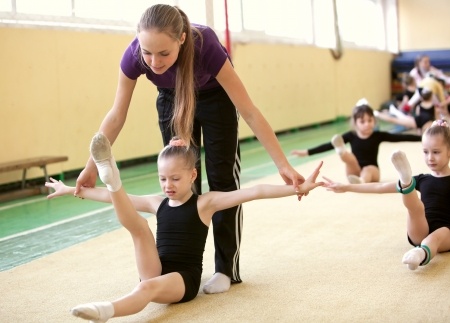

Gymnastics Accidents Cause 86,000 Injuries Annually
Every year in the United States, 86,000 injuries caused by gymnastics accidents are treated in emergency rooms and doctor’s offices. Gymnastics is a rigorous sport and the risk of injury only increases with the child’s age and complexity of the routines. Although gymnastics-related injuries are not often severe, they should be seen by a medical professional to try and prevent chronic pain or muscle weakness that could lead to further injury.
Common Gymnastics Injuries
In gymnastics exercises, the upper body is used as a weight-bearing joint which causes many injuries to the shoulder, elbow, and wrist:
Superior Labrum, Anterior-Posterior (SLAP) Lesions in the Shoulder
Labral tears (also called SLAP tears) most commonly occur during ring exercises. These tears are characterized by pain that seems to clear up but tends to recur when the activity is resumed. An MRI is sometimes used to establish a definitive diagnosis.
Elbow Dislocation
A dislocated elbow occurs when the bones that form the elbow joint are displaced from their normal position. Dislocated elbows are typically caused when a gymnast breaks their fall with an extended straight arm. Dislocated elbows require immediate medical attention.
Wrist Sprains
The wrist takes on a big load in gymnastics; often subjected to forces that can exceed twice the body weight. After a wrist injury, athletes should cut back on training hours and intensity and avoid activities that hurt the wrist over a six-week recovery period. A brace may be worn during this time to help immobilize the wrist.
When gymnastics injuries happen to the lower body they are usually a result from a landing or dismount and involve the knee and ankle:
Anterior Cruciate Ligament (ACL) Injury
ACL injuries are caused when a gymnast lands “short” or is over-rotated while tumbling, dismounting, or vaulting. Sometimes a “pop” is heard or felt followed by a swollen knee. An MRI is often performed to confirm an ACL injury. ACL reconstruction is often recommended for gymnasts who wish to return to full form.
Achilles Tendon Injury
Gymnasts land and jump repeatedly and thus can suffer from a variety of injuries to the Achilles tendon located just above the back of the heel. Achilles tendinitis causes sore calf muscles and treatment often includes an initial ultrasound, stretching, activity modification, and calf exercises. In severe cases, foot immobilization may be recommended for seven to ten days.
Lower Back Injuries
Low back pain and injuries are caused by muscle strain, ligament sprain, fracture, and/or disc disorders. Low-back pain can worsen with activity, especially with extension movements, such as arching the shoulders backwards. Gymnasts often recover well with rest and physical therapy exercises. An MRI or a bone scan are often helpful to rule out more significant injuries.
Foot and Ankle Injuries
Injuries to the foot and ankle are common in gymnastics but with varying degrees of severity. Signs of a serious foot injury include swelling, bruising and tenderness directly over the bones. Minor foot injuries will typically have tenderness limited to one side of the joint and lack significant swelling. Serious injuries should be seen by a medical professional and may require significant rest before returning to the sport while minor injuries may be resolved in a week. Protecting the ankle with tape or a brace can help speed recovery and reduce the risk for re-injury.
Gymnastics Safety Tips
Along with the following safety tips, proper training techniques and the consistent use of safety equipment can help to prevent gymnastics related injuries:
- Always wear safety gear while training or competing including items such as wrist guards, hand grips, footwear, ankle or elbow braces, and pads.
- If you are injured or you are in pain be sure to see your doctor and follow instructions for treatment.
- A first aid kit should be accessible during all competitions and practices.
- Equipment should be inspected for safety before using it for training including an assessment of its condition, padding on the floors, secured mats under every apparatus, and safety harnesses for learning difficult moves.
- A spotter should always be in place while learning new skills.
- Before jumping into training, warm up muscles with light aerobic exercise such as jumping jacks or running in place.
If you or a loved one were injured in an accident, you have enough to deal with. Let an experienced accident attorney fight for the full compensation that you deserve. It is not uncommon to receive a settlement from the insurance company that is two to three times bigger with the help of a lawyer. Call the caring accident attorneys at Tario & Associates, P.S. today for a FREE consultation! You will pay nothing up front and no attorney fees at all unless we recover damages for you!
Read More